Germany
DE-15: Reesholm
Reesholm is a penisula at the west end of the fjord Schlei near Schleswig. Since a couple of years extensive grazing is used to establish favourable salt meadows and habitats for a potential return of the ruff and the dunlin. In general the area has a high potential for birds and toads but the appropriate management could not be reached. The project will now help to find the best way.
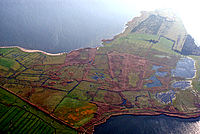
DE-16: Oehe-Schleimünde
The peninsula Oehe-Schleimünde creates the natural end of the fjord Schlei toward the Baltic Sea. A natural combination of strand walls and dunes sedimented towards the south assembles this unique site. Famous for ist birdlife since long time the grazing had been seen as a danger and stopped some decades ago. Unfortunately birds have left this nature reserve too soon. By reinstallment of a whole year grazing schemen with Galloway cattle the litter deposition shall be removed naturally and birds will hopefully return back soon on this special place.
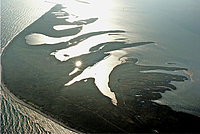
DE-17: Schwansener See
This site contains of a lagoon and a dune–strand wall barrier separating it fully from the Baltic Sea. The lagoon is heavily controlled by a sluice towards the Sea, so limited salt water comes into it. Long term well managed intensive pasture has diminished natural relief and structures of the dune, which the project aims to recreate. These depressions, slacks and structures welcome birds, toads and others for a new life. Maintenance of the dry and salty areas is taken over by whole year grazers. Interesting aspect here is the high number of visitors, especially in summer in this tourist area.
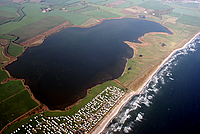
DE-18: Kleiner Binnensee
The dominating dyke seperates the dune and beach area from the lagoon and the sourrounding (less) salty meadows. This lagoon has a controlled connection to the Baltic Sea as well. Management of grassland on both sides of the dyke have potential for improvement.
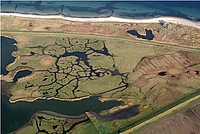
DE-19: Sehlendorfer Binnensee
This well managed site has an excellent structure of lagoon: the natural and undisturbed in- and outflow called Brök is a huge attraction. On the same high level is the bird life, especially during migration time attracting as much birds as bird observers. For the project the former camping-site Tivoli was a major action: a re-naturalisation iwas planned and successfully completed in spring 2007. A remodelling has offered nature to take over the walls and slacks. Already several Red-List plants have recolonised the area and toads from Fehmarn have found a new home here. The well known Highland cattle from the salm meadows nearby also maintain the new area and create an additional tourist attraction.
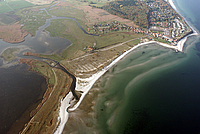
DE-20: Weißenhäuser Brök
The site contains of the dune Weissenhäuser Brök itself and a large former lagoon (Wesseker See) in the hinterland, today nearly cut off from the sea. The location is close to a huge holiday centre, a good opportunity for awareness rising activities. The invasive rose is heavily spreading out on the dune, which has not received any kind of substantial management since decades. Still many rare red list plants have patiently awaited the soft and gentle grazing of Highland cattle doing their job now since early 2007 during winter time. The lagoon Wesseker See will hardly be touched by the project. Management recommendations will help for a long term management.
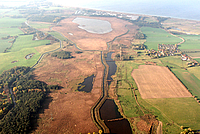
DE-21: Eichholzniederung
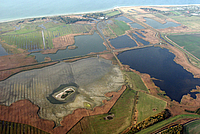
DE-22: Südwest-Fehmarn
The huge project site Südwest Fehmarn stretches along the south western coast of the island Fehmarn. Due to this location directly at the sea crossing of the most important birds migration route to and from Scandinavia the area has a considerable value as resting area. A former fish farm has been transformed to a nature centre with many visitors – with and without feathers. In addition some valuable beach and dune structures are included here.

DE-23: Grüner Brink
This site between dyke and sea directly faces Denmark’s southern coast of Falster. Drifting sand has created three lagoons, and another split is already preparing the next lagoon enclosure. Birdlife is heavily enjoying the place, for summer breeding as well as stop over when travelling.
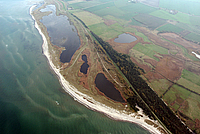
DE-24: Sundwiesen
This site is the only place where the rare and red list plant Apium repens is naturally growing in Schleswig-Holstein. It contains of several small sections around a small village. The complex is rather an overgrown grey dune heavily “misused” and abandoned for long time. The section with Apium repens has been extensively grazed by cattle or horses since long time and will be continued.
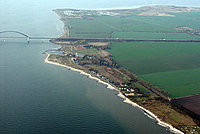
DE-25: Neustädter Binnenwasser
Surrounded by motorway, town and a crossing railway track this site is squeezed from many aspects. Water level is artificially lowered at two sides. Nevertheless salt meadows still show good potential here and will receive appropriate management.
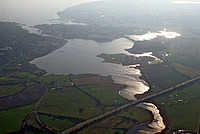
General overview abobut partner countries
You can download the extended text of the project objectives in general and country specific objectives here (PDF, 28 KB).